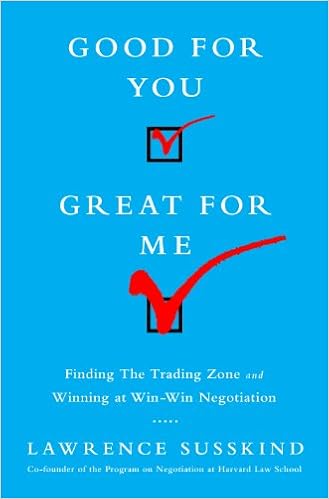1 Environmental dispute resolution (EDR) can be used “upstream” during policy-making and planning as well as “downstream,” once disputes have crystallized over administrative decisions (e.g. permitting, licensing, funding, etc.), or even after disputes have entered adjudication.
2. EDR only works if the parties are motivated to come to the negotiating table. It is fine if they have very different motivations (e.g. no good BATNA, an opportunity to create value, a desire to improve or repair relationships, pressure from coalition partners, etc.).
3. EDR needs a process manager; ideally, a professional mediator or facilitator (but not always). This person must be acceptable to all the parties being invited to come to the table.
4. The parties in EDR must have a chance to participate in or at least approve the agenda, ground rules, selection of parties, timetable and other elements of process design before EDR begins.
5. It is perfectly reasonable, even necessary, for a facilitator or mediator to get involved in a variety of away-from-the-table activities on behalf of the group. These can include making sure that all parties are prepared properly. The mediator might also work with the parties to help them remain in touch with their actual or putative constituents throughout the EDR process.
6. EDR works best when there are opportunities for Joint Fact Finding and they are managed by a facilitator or mediator.
JFF should be highly interactive, involving all the stakeholder representatives in specifying the questions that need to be answered, selecting the experts of various kinds who will be called on to help, and making decisions about which analytical methods should be used.
7. EDR should always emphasize value-creating opportunities (and not just zero-sum choices).
8. EDR can never substitute for statutorily-mandated decision-making by public officials or agency staff. It can, however, supplement whatever formal decision-making is required by law.
9. EDR will, of necessity, take different forms in different constitutional contexts around the world.
10 EDR can rarely, if ever be precedent setting. It needs to be fitted to the unique contextual details of each dispute/conflict/decision-making process. The outcomes of EDR efforts are rarely recorded in the way court decisions are. They are not likely, therefore, to be accompanied by a legal rationale that justifies whatever agreement is reached.
11 EDR can include opportunities for confidential give-and-take among the participants even though open meeting laws, sunshine laws and other transparency requirements must be met. Transparency is the mediator’s responsibility along with an obligation to maintain promises of confidentiality. These can be balanced by allowing the mediator to carry messages between the parties and through work that is done in caucuses.
12 There are substantial advantages to creating EDR “systems” rather than treating each EDR opportunity anew. This often requires that dispute handling systems be enabled by statute or regulation.
13 The costs of EDR need not be shared equally by the parties. Each party can contribute what it can without compromising the non-partisan or neutral stand of the mediator. Funds to support an EDR effort (regardless of who provides them) should only be allocated with the support of all the participants (perhaps through the involvement of an elected executive committee of stakeholders).
14 It is possible to evaluate and improve EDR efforts. It is unlikely, however, that consistent quantitative measures of benefits and costs will be central to such assessments. Rather, in-depth case-by-case analyses – before, during and after each effort – undertaken by independent evaluators are required. These tend to focus on the satisfaction of the parties relative to their pre-defined BATNAs along with their sense of how the process "worked" given the alternative ways of handling the situation that were available.
15 Parties involved in EDR should be consult legal counsel. Court-connected EDR will undoubtedly involve parties and their lawyers throughout. The presence of lawyers in EDR, however, should not be allowed to create barriers to informal (problem-solving) dialogue among the parties themselves. Professional neutrals need not be attorneys.




